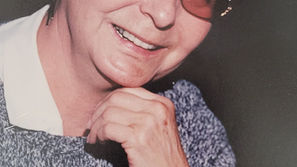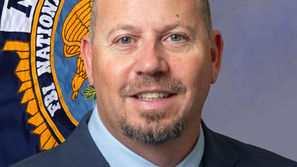Dangers, rewards of being an officer
- D. August Promnitz
- Nov 24, 2016
- 3 min read
This fall, Madera Tribune reporter Donald Promnitz took part in a Citizens Academy conducted by the Madera Police Department, and volunteered to experience the electroshock of a taser.
When I signed up to attend the Madera Police Department’s Citizen’s Police Academy, little did I know that I would find myself on the business end of a taser, or that one of my classmates would be dodging bullets along Lighthouse Drive, with one round coming just inches from her head.
My goal in doing so was to learn more about the lives and work of the police, with the hopes that it would make me better informed with my job as a crime reporter.
What I got instead was a crash course on the immense load that must be carried in order to wear the badge.
Finally, after 13 weeks of classroom instructions, investigating mock crime scenes, driving squad cars, firing service weapons, and yes, getting tazed (they’ve threatened that if I ever report on them unfairly, they will release the footage of my howling and writhing), I walked out of City Hall last Thursday night, certificate of completion in hand. It marked the end of what started as a research project, but became a lesson in one of the toughest lines of work one can imagine.
As it turns out, there’s more to being an officer than going out, making arrests, driving with sirens, and drawing the gun. Months, even years, go into preparation for the job. In order to become an officer, one must push himself or herself to his or her physical and mental limits. Officers must learn not only the protocol for an emergency, but every police code in the book down to the last number, letter and dash.
Then, and only then, can an officer wear the badge, for a job that is being met with increasing hostility by the public.
For example, it’s not always when a police officer does the right thing that the media takes interest, but also when an officer might make a mistake. It is also a job that has become more dangerous over the past few years, as the No. 1 killer of officers went from traffic accidents to shootings. This was brought home in late October, when one of my academy classmates was nearly shot and killed during a car chase on her ride-along. The routine patrol, turned dangerous encounter, became national news, and it was thanks to the quick thinking and level head of Officer Julian Garcia that no one was seriously hurt, a reflection of his rigorous training in action.
The three suspects in the shooting were later arrested, the meth and gun in the stolen vehicle making it clear the kind of people whom Officer Garcia and the ride-along student were dealing with.
As for the other people in my class and I, we got a far less potent taste of what it was like to be in law enforcement. We got to do the fun things you see on TV, but also sat through countless videos and lectures on the hardships and risks, watching numerous videos on what happened to real officers if they made even the slightest slip, or let their guard down in the field, and it became all-too-apparent why so many incidents occurred, though the news cameras fail to give the whole story.
In short, law enforcement isn’t a job. It isn’t even a career; it’s a calling. And as much as I enjoyed the adrenaline and bonding that came with my lessons, I’m grateful to be behind a desk instead, working for a newspaper.
Even more so, I’m grateful that there are such, skilled, more able men and women, to take on the burdens of the gun, the cuffs, and the badge.


























Comments